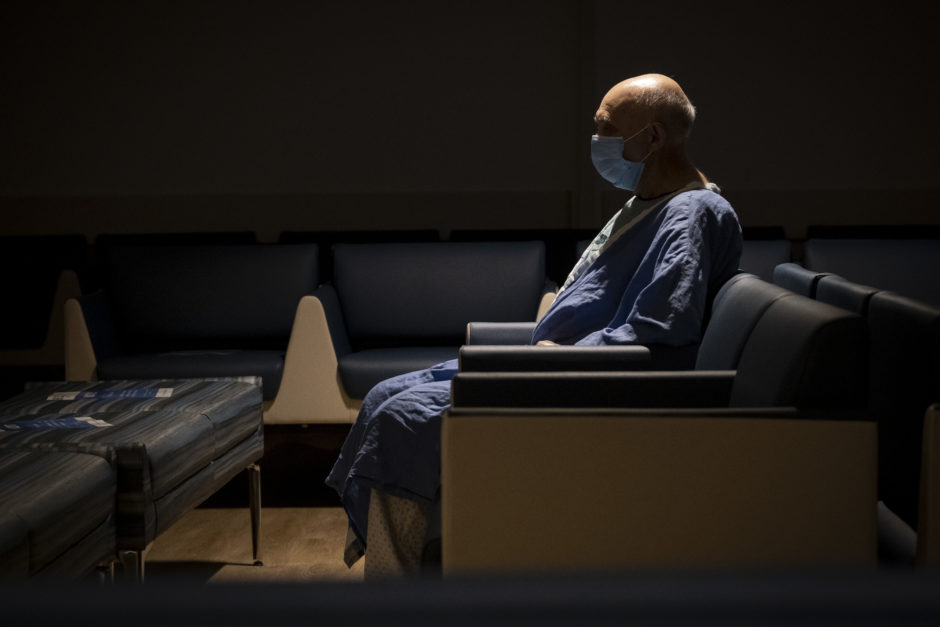June 6, 2020
It’s late May and Peter Dynov sits alone in a dark, empty waiting room in Toronto’s North York General Hospital. He’s 72 years old and has never been in a hospital before.
“It’s my first time in this position,” he says, shuffling anxiously in his seat. He’s about to be taken into an operating room to determine how advanced his stomach cancer has become. “Not the best time in my life, but what can you do?”
A thin, soft-spoken man, Dynov is married, with a son and three grandchildren. But none of them are by his side today. They can’t be.
As COVID-19 spread around the world, Canadian hospitals moved quickly to ban visitors in an effort to prevent outbreaks. They have also instituted other protective measures, from physical barriers to more elaborate care protocols, which can have an isolating effect on patients. So Dynov is facing the unknown alone.
COVID-19 is "completely different, the way that it's penetrated everyone's lives."
His face is obscured by a mask, but you can tell he’s unsettled.
“Everyone is on the nerves,” he says. “But that’s life.”
North York General is one of many hospitals across the country dealing with this set of circumstances. Whether you’re being treated for cancer, a broken bone or a heart attack, this has become the new normal.
Waiting rooms are largely empty. Some patients are too scared of COVID-19 to even step foot inside a hospital.
Meanwhile, physical distancing measures mean relatively quick procedures now take much longer. And health-care workers are exhausted and unsure how they can sustain their current pace as more elective procedures open up.
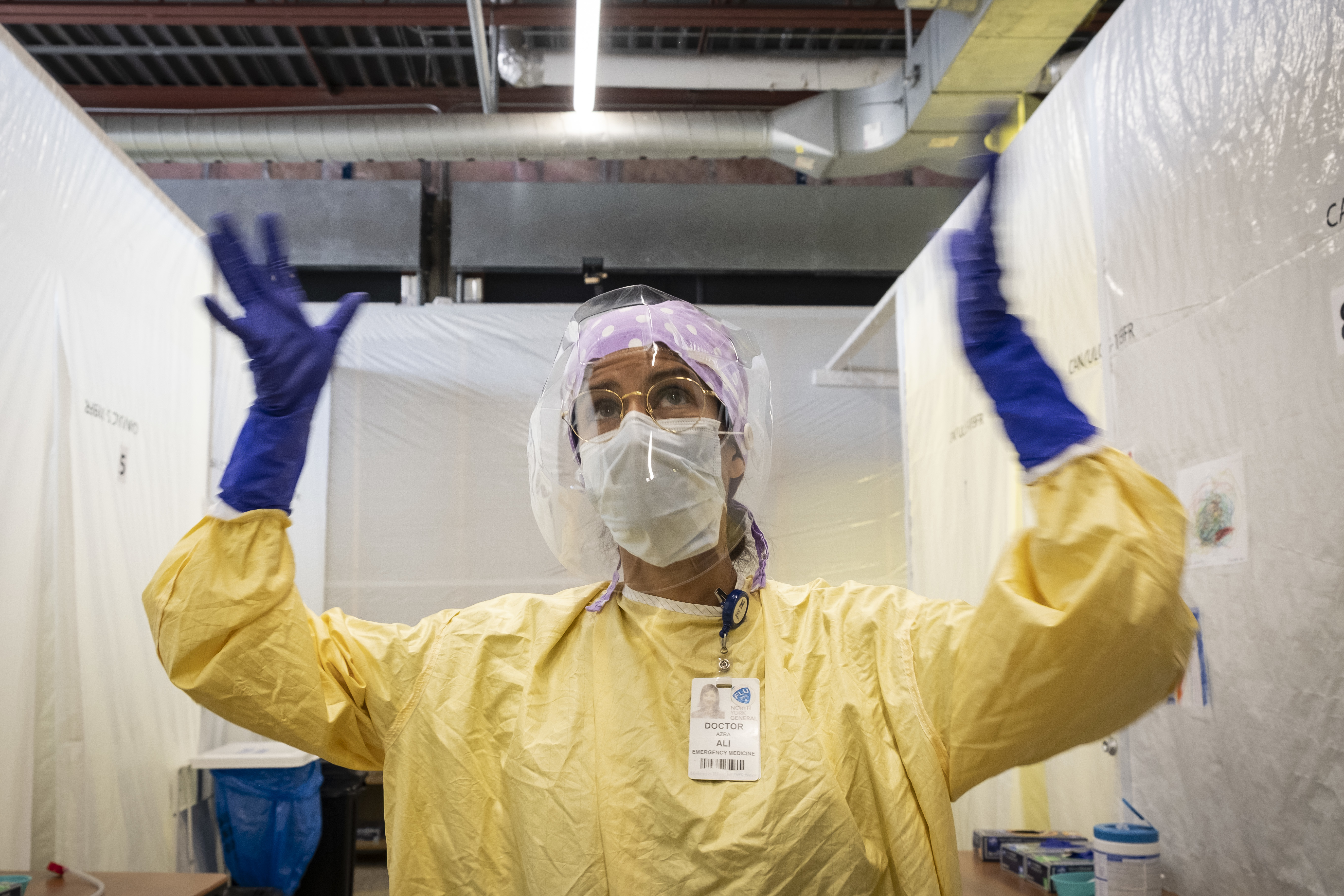
These new protocols are “affecting all of us,” says Dr. Azra Ali, an emergency room physician at North York General.
“Whether you're a doctor or you're a vulnerable patient — it's completely different, the way that it's penetrated everyone's lives.”
It was March 15 when Christin Paliougkas, a registered nurse, realized everything would change. Her sister was over for Sunday dinner when they heard on the news that elective surgeries across Ontario were being cancelled.
“That’s when the anxiety first started,” she says.
Her mind immediately drifted back to SARS. Paliougkas worked at North York General during the 2003 outbreak, which hit the hospital hard.
It all started when an elderly patient was admitted on March 22, 2003, with a fractured pelvis, then transferred to the orthopedic ward on April 2. He was soon found to have respiratory symptoms, fever, diarrhea and had stopped responding to treatment.
Nelia Laroza was a registered nurse in the orthopedic ward at the time. She fell ill in mid-May, believed to have been exposed in the ward. North York General moved quickly to shut its doors to everyone but SARS patients in an effort to contain the outbreak.
A plaque and memorial statue to victims of SARS sits in a garden at one of the entrances, a constant reminder of what's at stake.
Health-care workers were placed on a 10-day quarantine from work and told to avoid public places, close contact with family and to wear masks when in public. By June 9, there were 79 new cases of SARS at the hospital. On June 29, Laroza became the first Canadian health-care worker to die from SARS.
The loss is still felt today. A plaque and memorial statue sits in a garden at one of the entrances to North York General, a constant reminder of what’s at stake.
The hospital has done exceptionally well in the current pandemic, reporting only two outbreaks of COVID-19, involving a handful of patients and staff members. Its intensive care unit never reached full capacity.
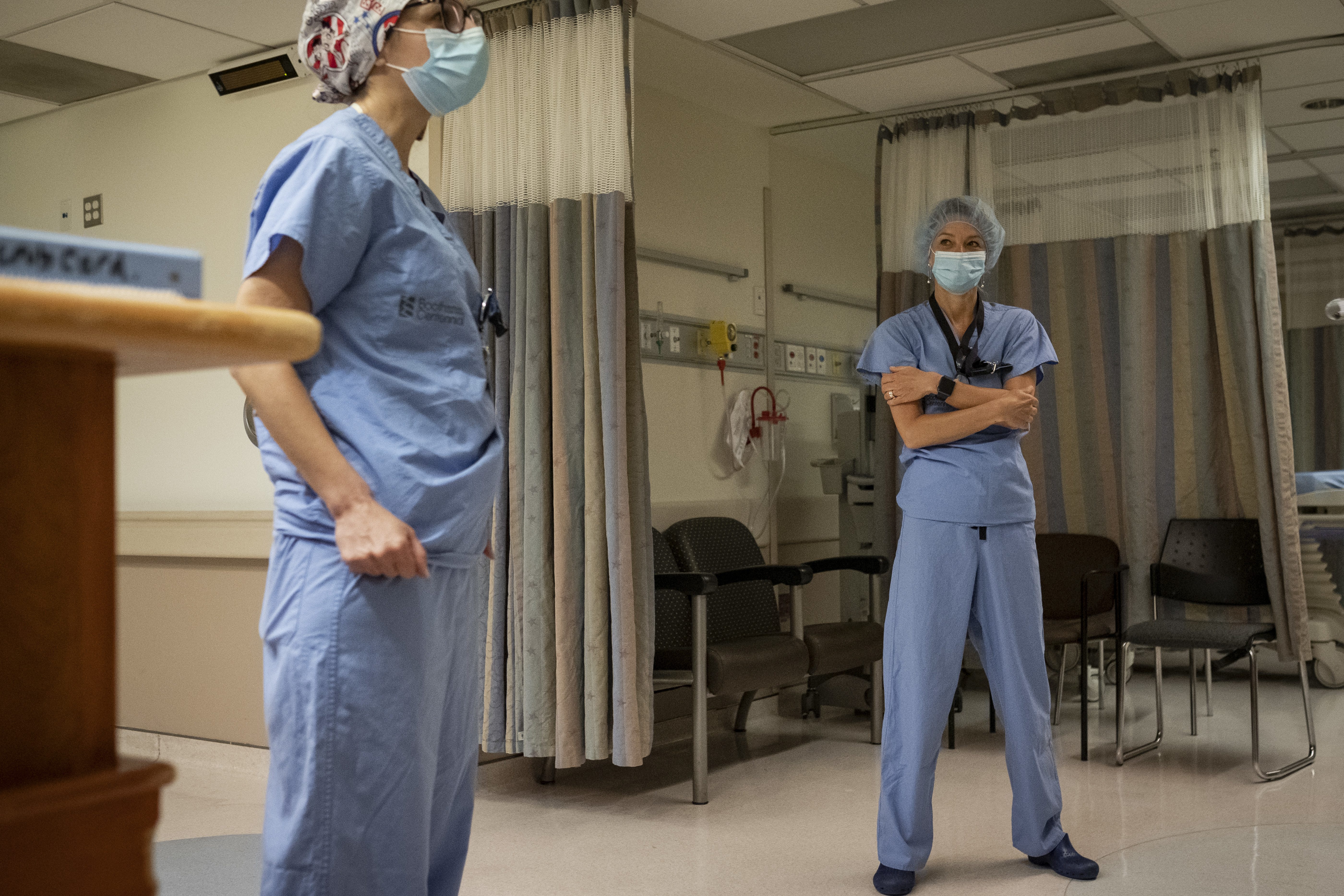
Even so, fear of the worst brought hospital staff closer. As uncertainty ran high in mid-March, staff came together every morning to share their feelings. The daily huddles involved everyone from surgeons to cleaners, secretaries to nurses.
Everyone had the opportunity to voice challenges and concerns in order to work through them.
“That team approach really helped us get through this,” says Michell Richardson, another registered nurse.
But the threat of COVID-19 is constant, unlike anything they’ve seen before.
“I worked here during SARS. This is different,” says Debbie Gayle, who screens people coming into North York General. “SARS was in here" — meaning the hospital — "not out there.”
Just before 7 a.m. one recent morning, an unshaven, tired-looking man enters North York General.
“Hi, good morning,” Gayle says to him from behind a pane of glass. “Any fever, chills, cough, runny nose, sore throat, shortness of breath, nausea, vomiting, diarrhea, loss of taste or smell?”
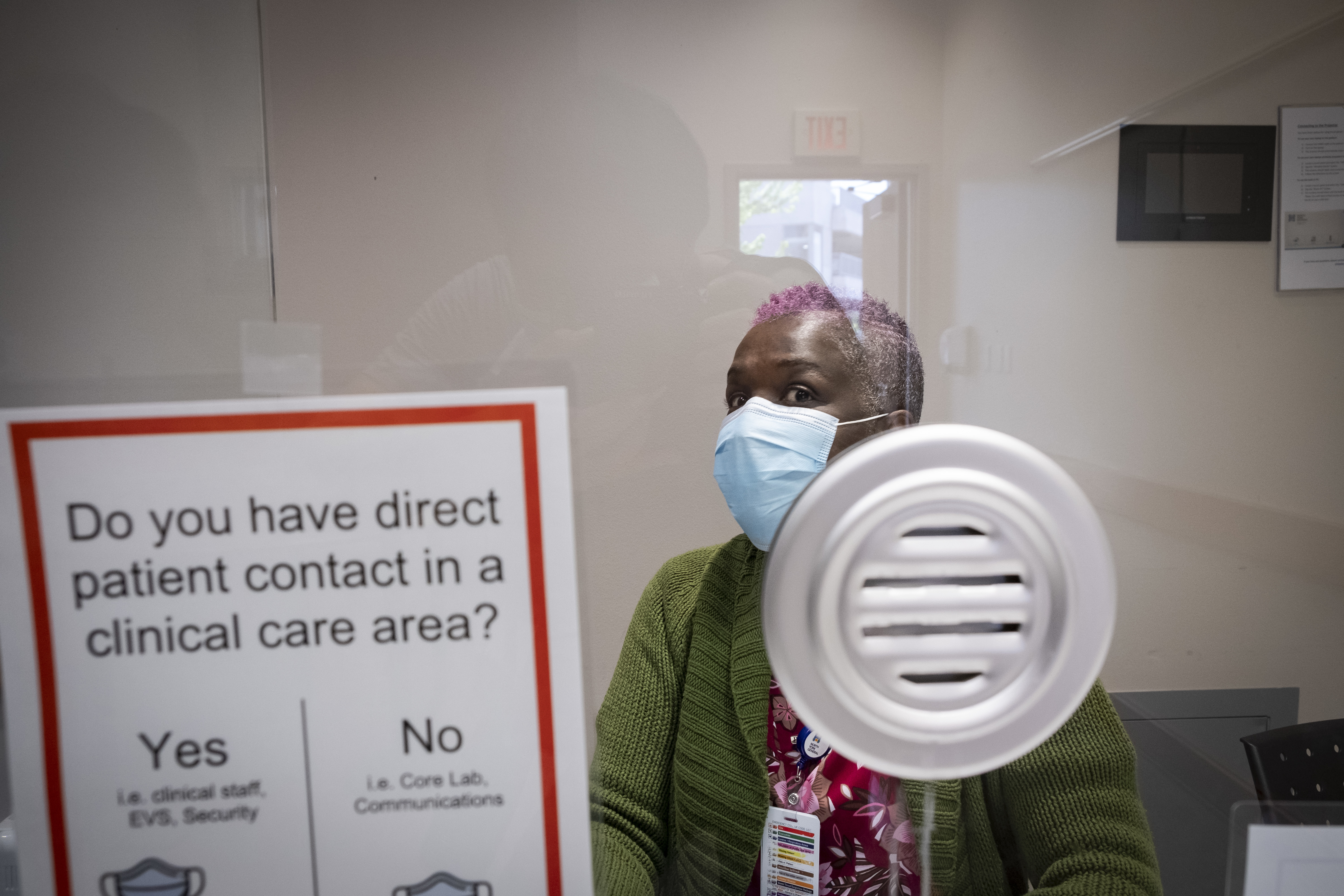
“No,” he responds gruffly.
This is no patient. It's Dr. Peter Stotland, a surgical oncologist specializing in the removal of gastrointestinal tumours. Staff have to be screened for COVID-19 symptoms every day before they can even enter the building. It’s a necessary process but also a stark reminder of their new reality, as well as an added frustration.
Once cleared, Stotland heads inside to do his rounds, which on this day includes speaking to cancer patient Peter Dynov.
The new normal has been an adjustment for Stotland, who is used to a fast-paced environment.
“Surgeons are action people. It’s sort of like the stereotype you see on TV. Part of the reason we like surgery is because you do something, you see the results, you move on to the next thing,” he says. “Having done this for 12 years at a certain speed, a certain pace, a certain efficiency — now, to be thrown into something different just affects everything.”
WATCH | Dr. Peter Stotland talks about patient care in the COVID-19 era:
The hospital typically has 12 operating rooms running a day. Today, they have four. “This place is usually packed. It’s crazy,” Stotland says as he gestures around the empty halls. “Everything’s different.”
An average day can see anywhere from 40 to 70 patients. Today, there are just a handful.
“It’s surreal,” says fellow surgical oncologist Dr. Usmaan Hameed. “Eerily quiet.”
Hameed says “things are not as efficient as they used to be, and it’s not because we don’t want to be efficient or we’re not trying. It’s just that the protocols in place to keep the staff safe are completely different than what we had before and it just takes time.”
One of those protocols is the use of personal protective equipment. If you think it’s frustrating to put on a mask for an hour at the grocery store, imagine what doctors and nurses are going through wearing layers of PPE for the entirety of their shifts, which often go for 12 hours.
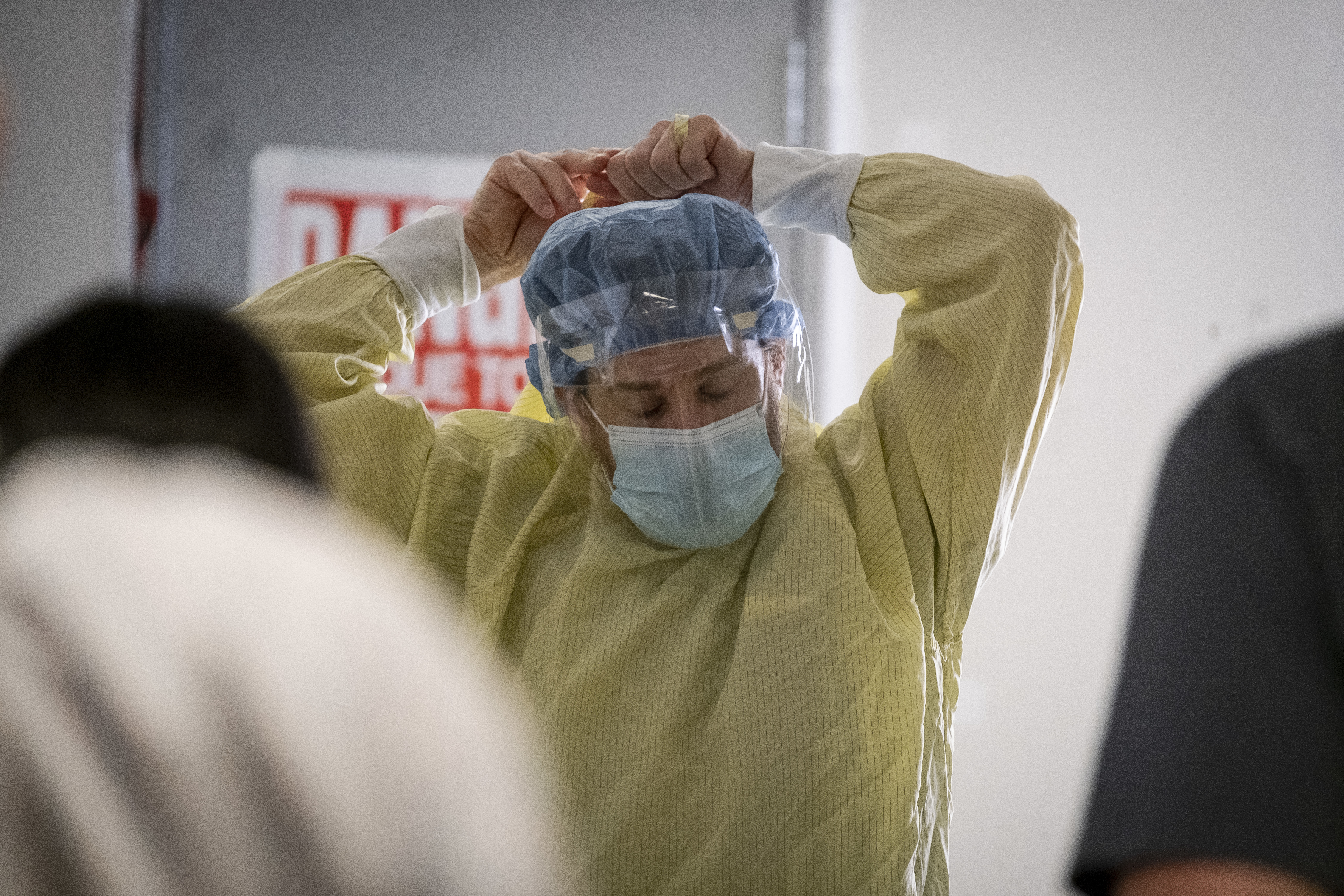
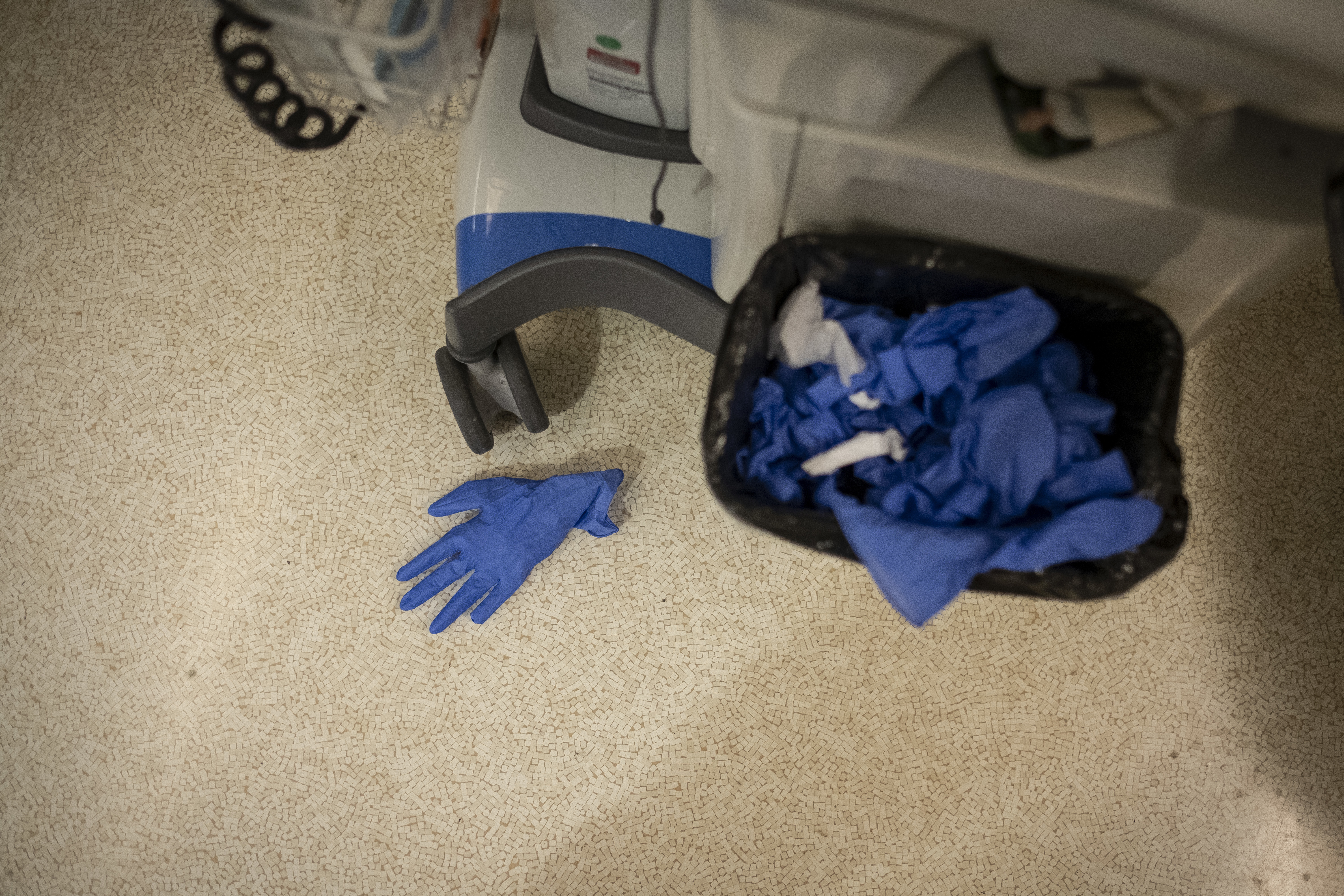
N95 masks and face shields become increasingly difficult to breathe in, gloves and gowns retain heat and cause you to sweat profusely, while caps and mask straps dig into your skin and become itchy and uncomfortable.
“A lot of people get runny noses,” says anesthesiologist Dr. Rolf Gronas at one point. “I have one right now.”
For staff, making the daily rounds has become incredibly challenging. Before entering a patient’s room, they must safely remove their PPE, then put it all on again — a cumbersome process called “donning and doffing.”
The risk of exposure to the virus is particularly high when removing PPE, so health-care workers need to be supervised by another staff member every time in order to make sure it’s done safely.
It’s all done with the patients in mind, but the minutes add up.
Doctors and nurses say every interaction feels drastically different than it did just three months ago. A reassuring hand on a patient’s shoulder. A hug after a difficult diagnosis. A high five from a colleague. All of these physical acts of kindness are no longer possible.
“I’m not used to not having that personal relationship with a person before any type of cancer surgery. I’m used to looking at someone in the eyes, talking to them,” Stotland says, clearly frustrated after a private visit with Dynov before his endoscopy.
“It’s tough on both ends for sure — being a patient, feeling alone."
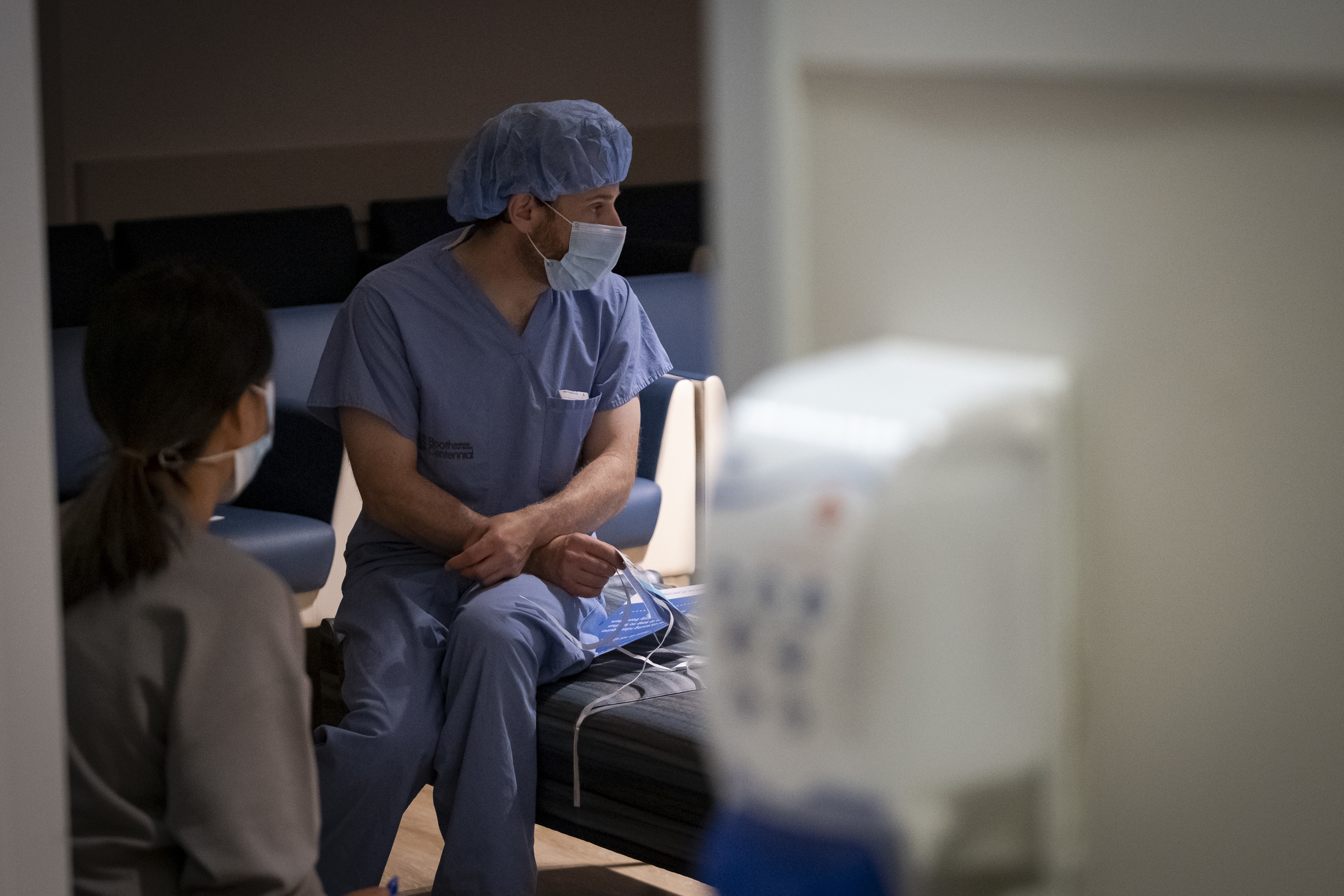
For the few patients who do make it into hospital for treatment, even basic communication with loved ones has become challenging.
“It used to be in the olden days – like, two months ago – you go in, the patient's family was there, you talk to them, you talk to the patient,” says gastroenterologist Dr. David Baron. “Now … sometimes you reach the family, sometimes you don't. Families are frustrated because they're not seeing their loved ones. We're frustrated because the patients are frustrated.”
Not surprisingly, when a patient is brought in for surgery deemed urgent enough that their life could be at risk, things move much slower than they did before the pandemic.
“The surgery itself isn’t different — it’s all the precautions and steps we have to do to get the patient into the operating room,” Stotland says. “It throws off your flow, the rhythm of the day. Everything’s just stretched out and a little bit more delayed.”
Here’s one example: Typically, once a patient gets intubated before surgery, the operation can begin. Now, with the risk of COVID-19 ever-present, staff must clear out of the operating room for 15 minutes after intubation before surgery — and then again after extubation — to avoid infection via airborne droplets.
“The days are longer, shifts are longer. Things that used to take an hour now take two hours,” Stotland says. “There are a lot more checks and balances that need to go into every aspect of the case, not just the surgery.”
The frustration is palpable on the entire floor.
“In the last two months, I've done fifteen procedures,” says Baron. Prior to COVID-19, he was doing that many in a single day. "So in almost three months, I've done one day of normal [work].”
While acknowledging the ongoing threat of COVID-19, Baron says, "there are many, many other patients who aren't being dealt with that need to be dealt with."
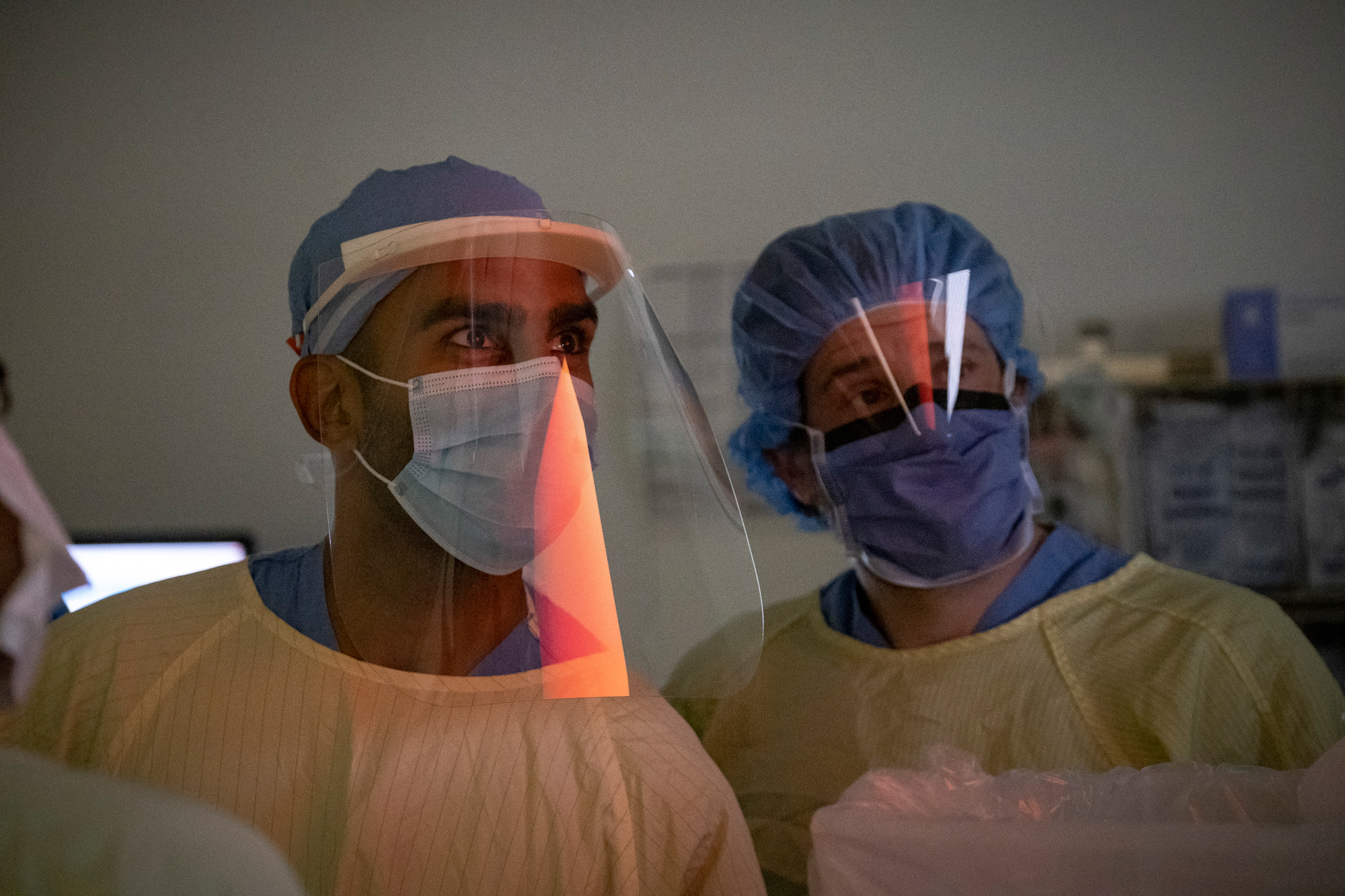
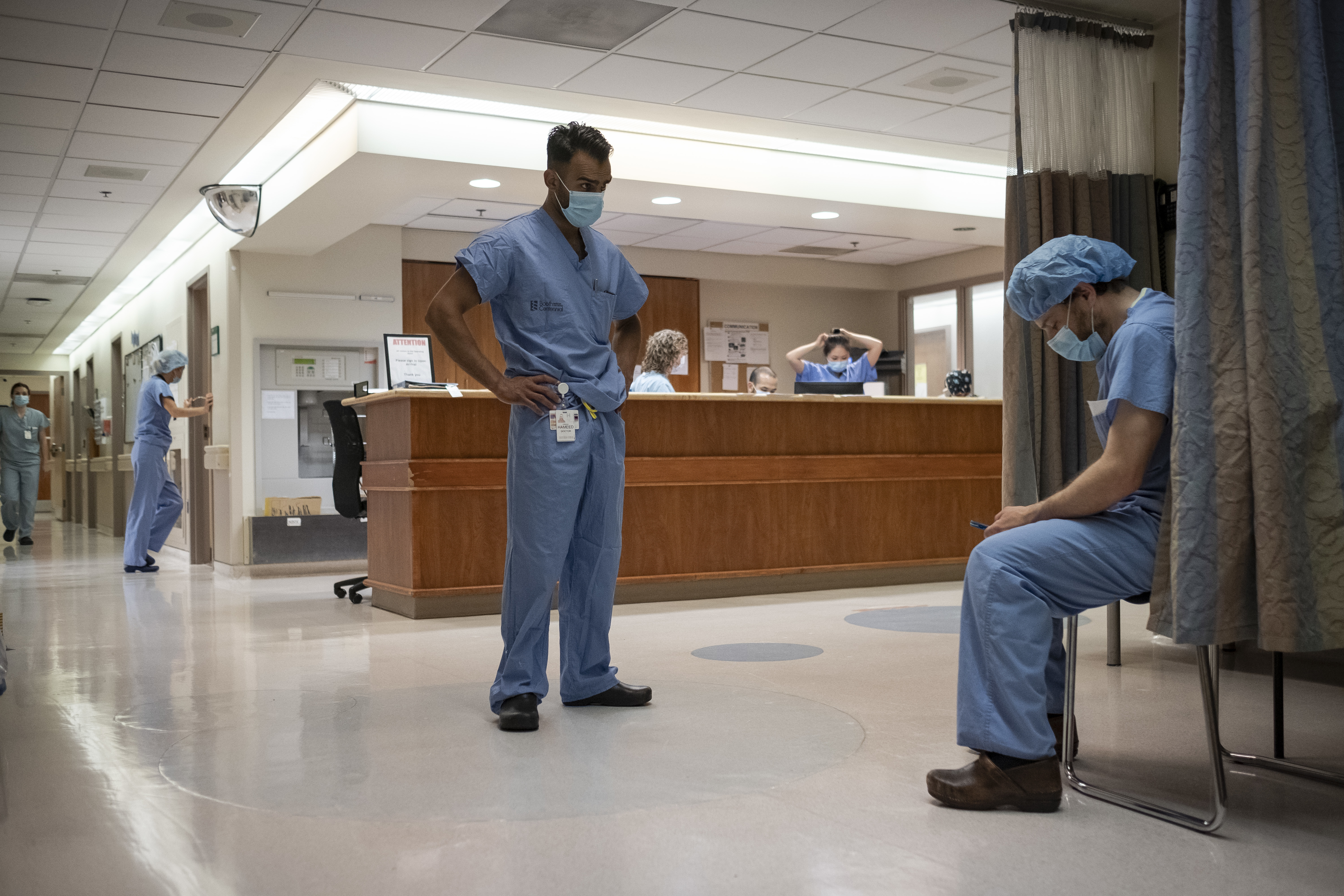
The hospital shut its operating room to elective procedures on March 18, meaning only emergencies would be operated on.
But broken bones don’t stop in a pandemic, and Chief of Orthopedic Surgery Dr. Hossein Mehdian had patients in need of help.
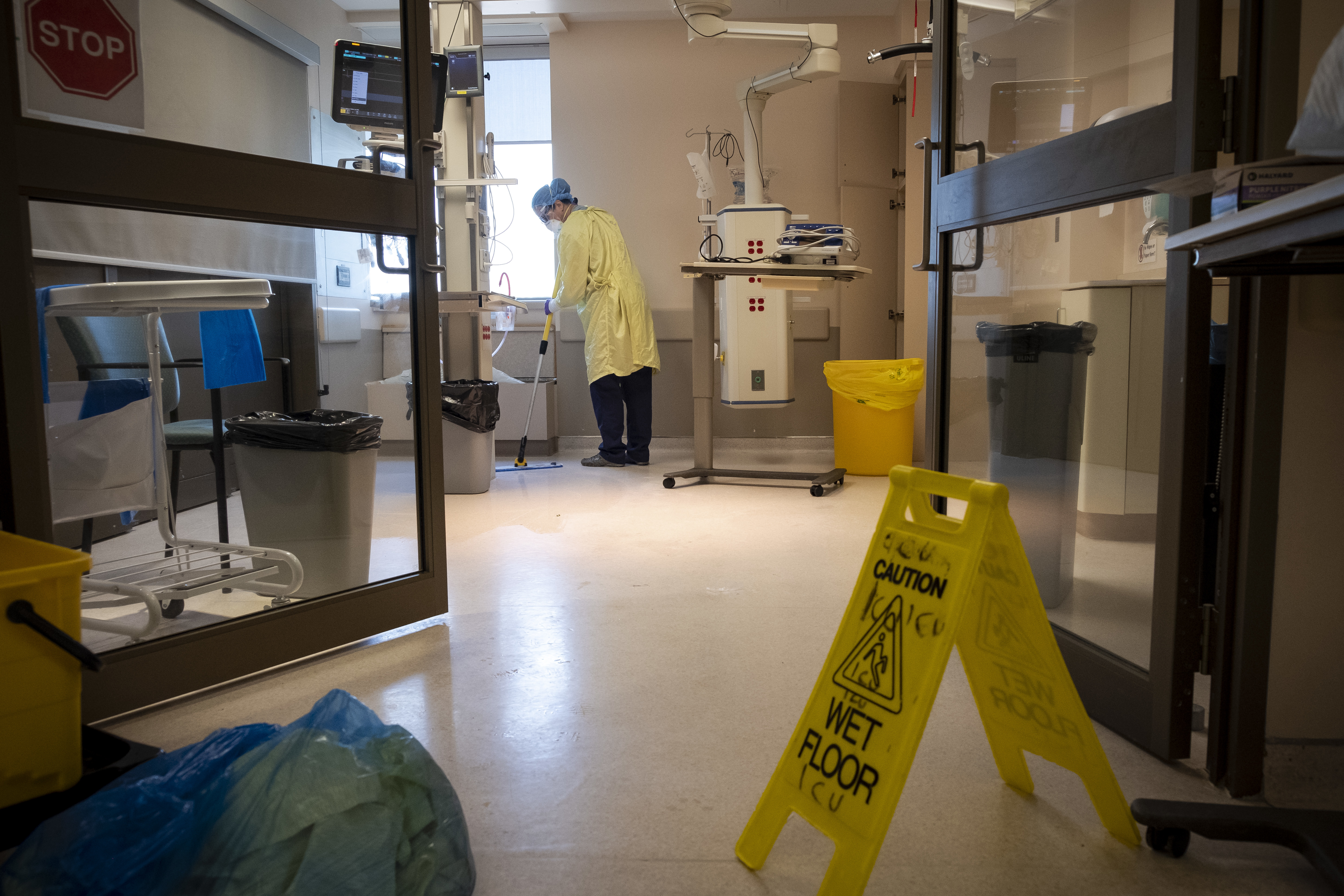
One of them was a woman named Diane Latanville, who recently underwent a hip replacement and needed follow-up surgery in order to walk again. Latanville also happens to be a double lung transplant recipient, a fact that made her particularly vulnerable to COVID-19.
Her follow-up hip surgery was scheduled for May 11. “It was a very scary situation for her coming to the hospital in this day and age. We took all the necessary precautions,” Median says. “If, God forbid, she gets an infection in her lungs, it’s not going to be really forgiving for her.”
Was she worried?
"I was sure the doctor would not be calling me for surgery unless the hospital was prepared."
“Oh, terribly,” Latanville says. But that didn’t stop her. “As soon as I had the opportunity, I took it,” she says. “I was sure the doctor would not be calling me for surgery unless the hospital was prepared — and it was.”
After the surgery was deemed a success, Latanville was kept in hospital for monitoring for three days. In order to limit her potential exposure to COVID-19, Median placed her in a private room and restricted her interactions with other patients and staff.
Three days later, Latanville was released and allowed to recover at home.
“From the time you walk in here and you see the preparedness with COVID and the staff, it gives you confidence,” she says. “So I’m more than happy with my stay here.”
That extra level of care is admirable, but may not be possible as more elective procedures open up.
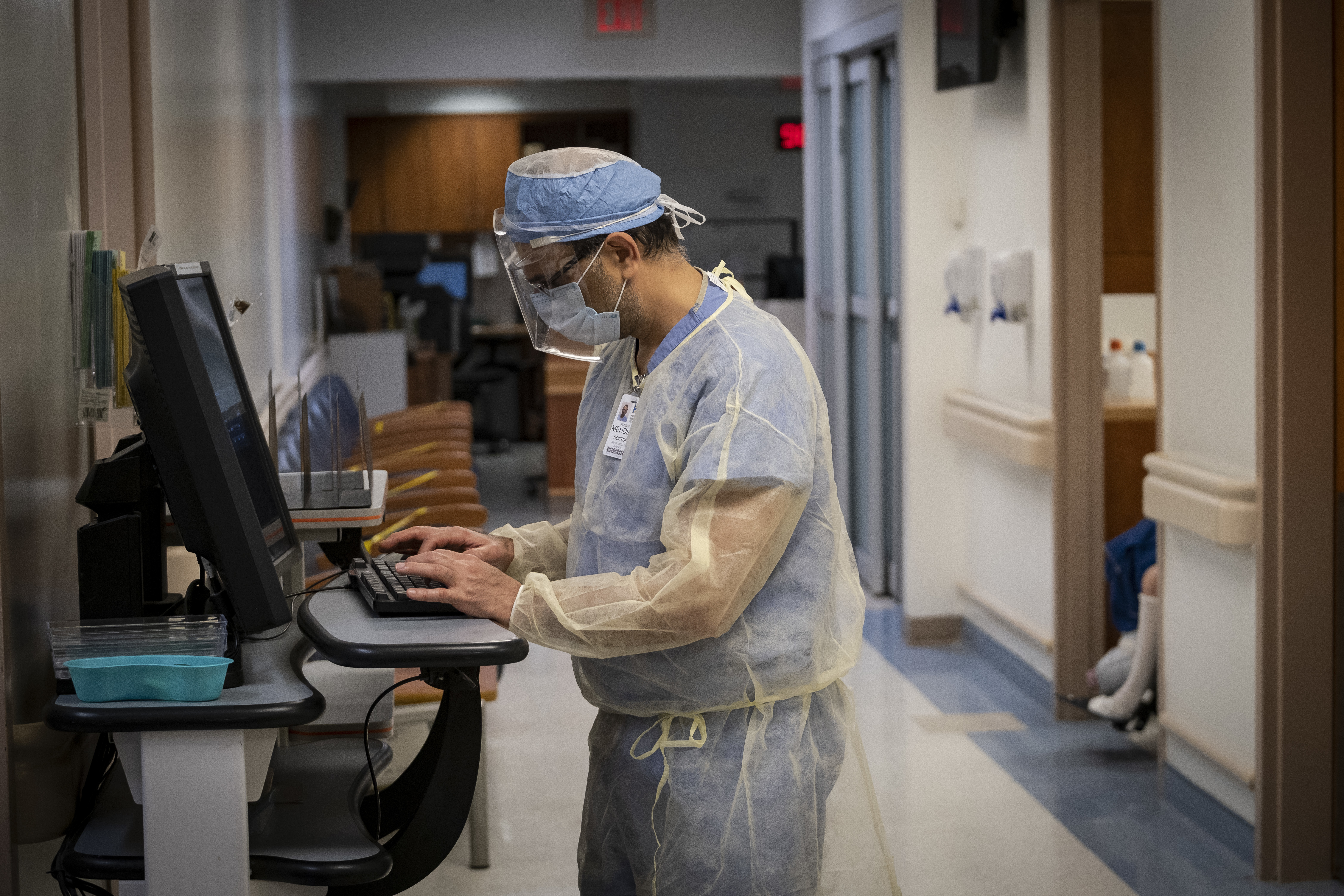
Initially, the number of fractures, dislocations and severe traumas needing treatment were small, but they have ramped up. Median says that as restrictions lift in Ontario and the weather gets nicer, more injuries are likely to happen.
“Within the last two or three weeks, there seems to have been more,” he says. “The freedom of people being able to go outside – doing exercise, biking and falling and fractures related to that.”
At the same time, some patients have been reluctant to even enter the hospital for fear of catching COVID-19.
“I had a [patient with a] wrist fracture that waited for four weeks before he decided to show up,” Median says. “Finally, he got surgery. But definitely, he suffered for four weeks.”
Michell Richardson, whose job it is to manage the flow of patients at North York General, worries about the backlog.
“We know that there are a lot of people that need to be done. So we want to get them through and help them, and to not be able to do that is not my nature, not our nature."
But she says “it’s going to take a long time to catch up to where it needs to be.”
As more elective procedures open up in hospitals across Canada, health-care workers are becoming mindful of the caseload.
“The long-term outlook is really unknown right now and trying to get all those patients through efficiently — it’s going to be a challenge,” says Hameed. “Hopefully we don’t get into situations with staff burnout.”
For anesthesiologist Gronas, the work is more tiring now — even with fewer patients. “There's the risk of letting your guard down. I'm worried about that for me for sure,” he says. “How long can you be on red alert for? At some stage, your mind gets used to the new normal.”
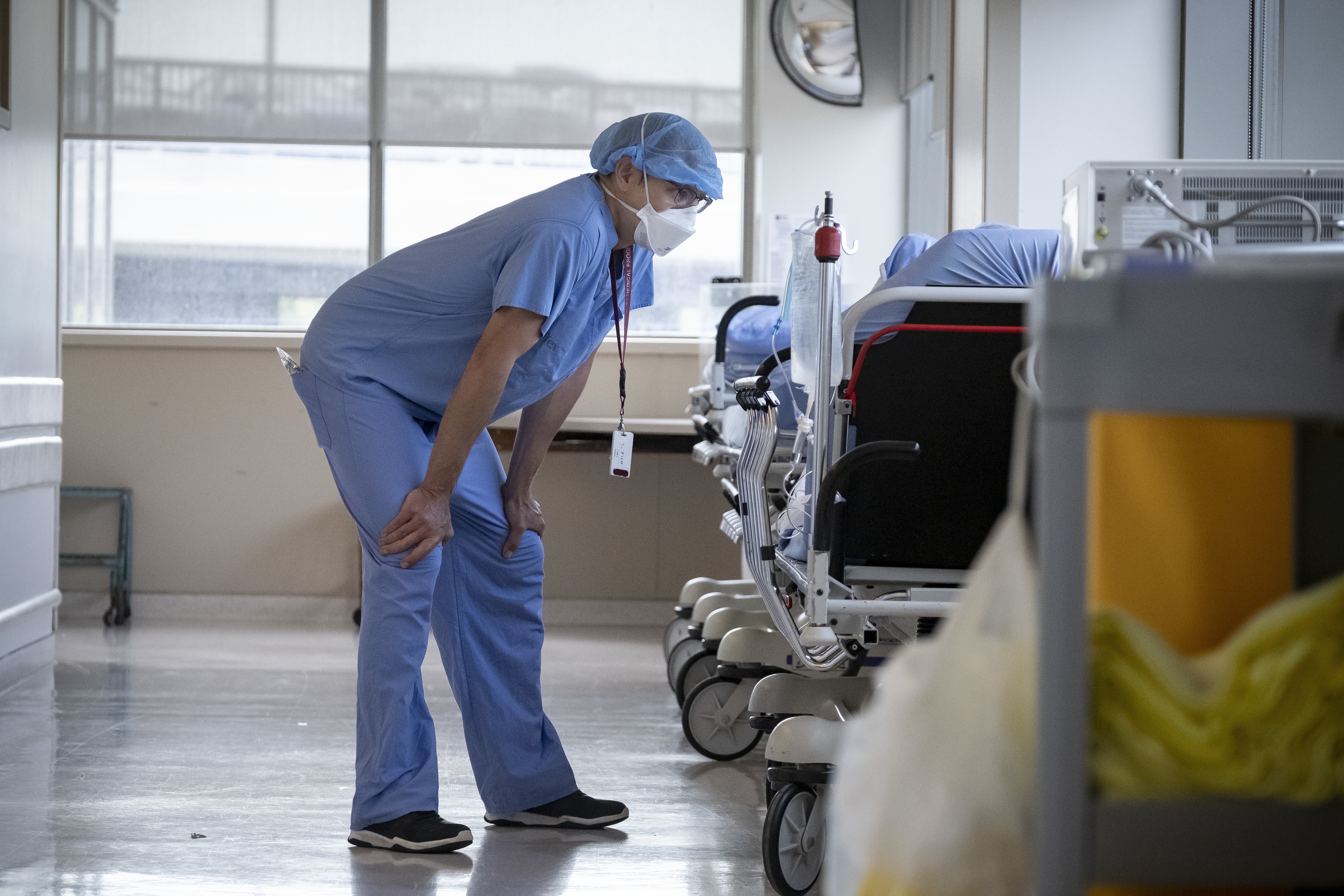
Stotland says the reality of the situation in hospitals is much different than what patients may think, as public health officials move to open up more elective procedures.
He and his colleagues are flooded with phone calls from patients and their families who want tests or procedures done, but he says the perception that hospitals are reopening quickly is misguided.
“People think that we’re open for business the way the government says things are open,” he says. “But things are being opened slowly and carefully because we don’t want another outbreak.”
For now, the hospital is triaging patients with the most urgent needs. Patients with urgent cancer diagnoses or severe chronic pain issues are being operated on whenever possible, while those with acute pain in need of surgery for things like hernias or joint replacements largely aren’t.

Despite this, the hospital’s OR is running seven days a week in an effort to physically distance patients and ensure the necessary time is taken to follow safety protocols.
“People are burnt out from this,” Stotland says, before climbing several flights of stairs to get to the OR.
While the hospital is working to turn its attention back to helping non-COVID-19 patients, staff still have to remain alert to those who might have the virus.
It’s just after noon and Dr. Azra Ali has seen a constant flow of patients into the hospital’s COVID-19 assessment centre.
One of them is Mr. Nadim (he didn't want CBC to use his first name), whom she welcomes into a small tented testing room in an area that branches off of the building.
Nadim is a resident at the Willowdale Welcome Centre, a refugee shelter that had one of the worst outbreaks in Toronto. Since March, 185 residents and more than a dozen staff members there have tested positive for COVID-19. He is one of them.
Nadim previously tested positive for COVID-19 on April 13. He recovered, but his symptoms returned in late May: dry cough, sore throat, fatigue and severe chest pain.
He braces himself for his third COVID-19 test in less than two months, wincing in anticipation as Ali prepares the nasal swab.
“Just relax your face,” she says, counting to 10 as the swab enters each nostril. He winces again.
“You did great,” she says when it’s over. “Good work.”
Ali explains he needs to self-isolate for 14 days if the test is positive again.
“I need medicine,” Nadim interjects.
“There’s no medicine for this,” Ali tells him.
“No?” he responds, incredulous.
Ali explains that all he can do is rest and drink lots of fluids, elevating himself on pillows at night to help with the coughing. There’s not much else she can say.
Ali thrives on comforting her patients, making a physical and emotional connection in order to ease their anxiety. But like everyone else at North York General, she’s had to change the way she delivers that care.
WATCH | Dr. Azra Ali talks about how she expresses empathy under layers of PPE:
She says she can’t speak softly to her patients in difficult moments, like she used to. Instead, she has to raise her voice so they can understand her through the layers of equipment. The constant whirring of fans in the testing centre makes every conversation that much harder.
Despite the challenges, Ali considers herself lucky.
“Ironically, because of all of this protection, sometimes I have to put my hands on my patients to feel their belly, to listen to their lungs, and I'm grateful that I'm in a position where I can still put my hands on people very safely, very respectfully,” she says.
“There's some tactile therapy going on — for both of us.”
You can barely make out what she looks like through her PPE, but her kind, bright eyes shine through. The range of emotion she’s able to convey from beneath layers of PPE is remarkable.
“I try to divert my expression with my eyes, with my voice, with my body language as much as possible to still maintain a place of safety and freedom for patients and reassurance,” Ali says. “And I will put my hands on a patient and say it's going to be OK. Because they need that.”
Because her patients don’t have loved ones by their side, Ali feels she needs to fill that role.
“They're fully alone when they're in the emergency department — scared, not having any physical presence of their social support,” she says.
That's why “it's even more important to listen, to be kind, to try to put yourself in their position. Not just see them for whatever the disease is ... and remember that they don't have the same bodily cues from me that they normally would.”
Ali worked on the front lines of SARS at North York General in 2003. But the current moment doesn’t feel the same.
“During SARS, it felt like we were in a war. It was such a bad disease and we were really working together to fight it. And it was contained, right? There was a light at the end of the tunnel,” she says.
“This is so different. There's no end in sight.”

Correction: A previous version of this story said that no staff members at North York General were infected. North York General later confirmed, however, that seven front-line staff at the hospital were infected with COVID-19.
